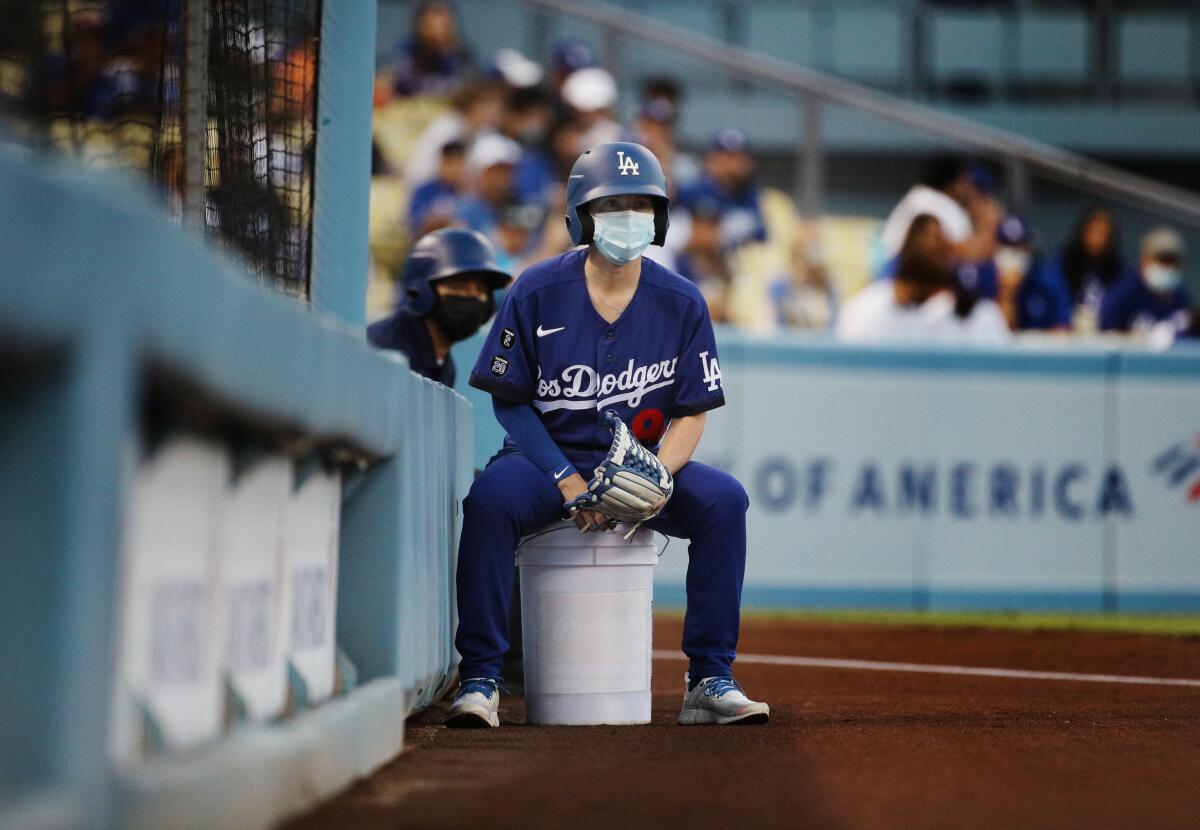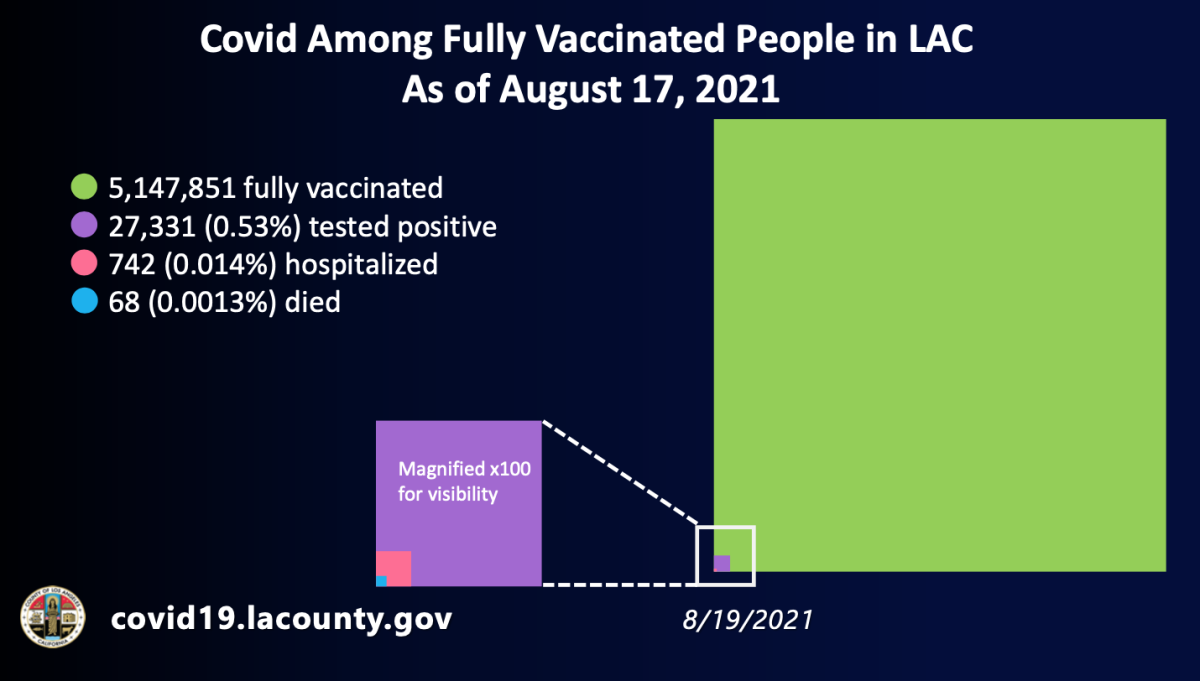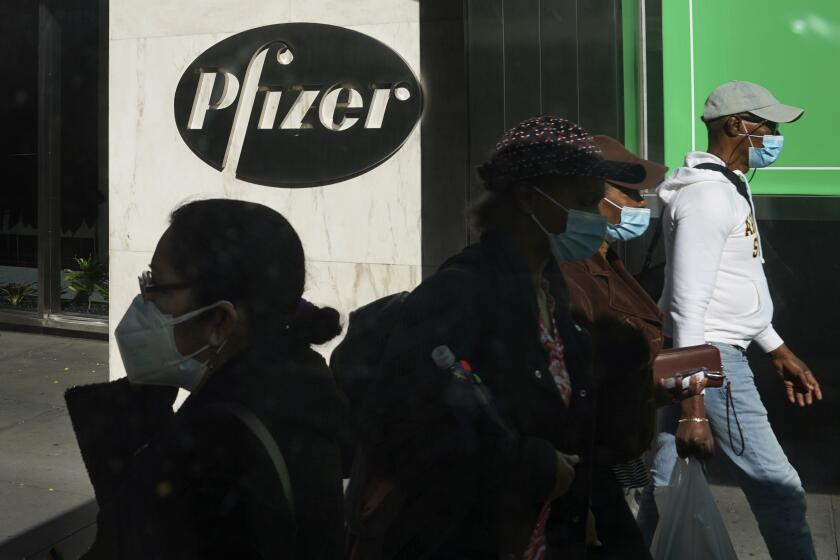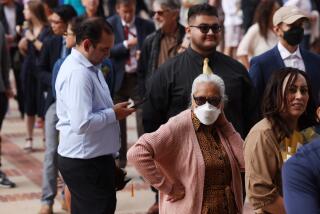Breakthrough infections rise in L.A. County; young adults most infected with coronavirus

As the highly contagious Delta variant of the coronavirus continues to spread, breakthrough infections of fully vaccinated people are ticking up in Los Angeles County, but inoculated people remain generally well-protected against hospitalizations and death.
Cumulatively, among 5.1 million L.A. County residents who are fully vaccinated, 0.53% have tested positive, 0.014% have been hospitalized and 0.0013% — or 68 people — have died.
“Most of these deaths have happened, unfortunately, among people who were seriously ill with comorbidities and/or had immune compromised systems,” L.A. County Public Health Director Barbara Ferrer said in a recent briefing.
The announcement Monday is expected to boost public confidence in vaccines and spur institutions both public and private to start mandating vaccination for employees.
The latest data “reflect the reality that the vaccines do not provide 100% protection, and that with these high rates of community transmission, more fully vaccinated people are getting post-vaccination infections,” Ferrer said. “However, this very same information also makes it clear how much protection vaccinated people still have. Most of us that are fully vaccinated ... don’t get infected.”
By far, the age group now most likely to get infected with the coronavirus in Los Angeles County is younger adults — those 18 to 49. As of early August, for every 100,000 vaccinated younger adults, nearly 150 were getting infected weekly.
The coronavirus case rate was much worse among unvaccinated people. For every 100,000 unvaccinated younger adults, nearly 450 were getting infected weekly.
That means unvaccinated younger adults are three times as likely to get infected with the coronavirus as their fully vaccinated counterparts.
Those being hospitalized, however, are far more likely to be older, unvaccinated adults. The hospitalization rate among unvaccinated adults 50 and older has risen to a new summertime high: For every 100,000 unvaccinated older adults, nearly 60 were in the hospital with a COVID-19 infection.
But for every 100,000 fully vaccinated older adults, only five were in the hospital with a COVID-19 infection.
That means unvaccinated older adults are 12 times more likely to be hospitalized than their vaccinated counterparts. Unvaccinated younger adults are 25 times more likely to be hospitalized than those who are fully vaccinated in that age group.
“If you’re unvaccinated, you’ve got a lot of risk — a lot of risk of being in the hospital and a lot of risk [of] dying,” Ferrer said. “And that includes younger people who are unvaccinated as well as older people, who always have more risk with this virus for having a bad outcome.”
Those most at risk of dying from COVID-19 in L.A. County are unvaccinated residents 50 and older. Among every 100,000 residents in that age group, there were 5.9 deaths a week in early August, a death rate nearly 17 times higher than that of vaccinated residents among the same ages.
Younger unvaccinated adults, those between the ages of 18 and 49, are still fairly unlikely to die from COVID-19. But that cohort’s death rate — 0.9 death for every 100,000 younger adults — is still more than 22 times higher than their vaccinated counterparts.

Overall, people who are not fully vaccinated but require hospitalization tend to be younger — the median age is 50, and many of those are between the ages of 35 and 63. This group is more likely to be admitted to the intensive care unit or require sedation and the insertion of a breathing tube in their windpipe than vaccinated people.
By contrast, among those who are fully vaccinated and need hospitalization, patients tend to be older; their median age is 65, with many between the ages of 54 and 78.
More to Read
Sign up for Essential California
The most important California stories and recommendations in your inbox every morning.
You may occasionally receive promotional content from the Los Angeles Times.













